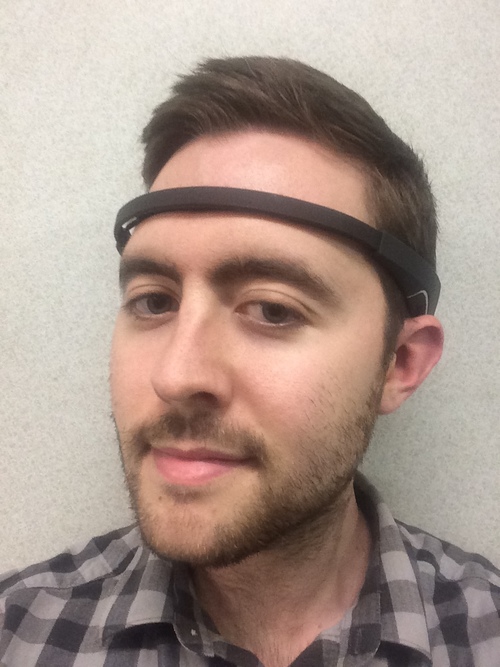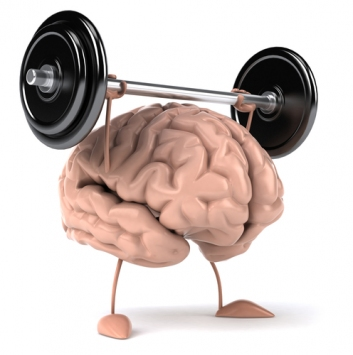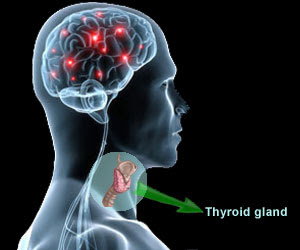When I first started looking for ways to overcome my chronic anxiety, I originally didn’t think nutrition had anything to do with it.
But I was wrong.
Being deficient in certain nutrients can actually cause or worsen your anxiety.
And getting more of the right vitamins and minerals can increase your ability to properly manage stress.
Anxiety itself can also deplete nutrient levels.
So the more anxious you are, the faster your body will burn through its vitamins and minerals.
And the lower your nutrient levels, the more anxiety you’ll have.
It can become a never-ending cycle, eventually leading you to a psychiatrist’s office.
But instead of checking your nutrient levels, your psychiatrist is likely to prescribe you anti-anxiety medication.
And what most people don’t realize – including most psychiatrists – is that anti-anxiety medications can further deplete your nutrient levels.
This all might sound like a disaster, but I promise you – it’s not.
It doesn’t have to be this way.
You can nip the problem in the bud.
This article lays out nine nutrient deficiencies that can contribute to anxiety.
Making sure you get enough of these vitamins and minerals through food or supplementation can make a profound difference.
All of them have really helped me at one point or another.
Note: If you also have depression, check out my other article, 20 Nutrient Deficiencies That Can Make You Depressed
1. Magnesium
Magnesium is the fourth most abundant mineral in the human body.
And it’s absolutely essential for optimal brain function and mental health.
Unfortunately, many people don’t get enough magnesium, even if they eat a healthy diet.
In fact, research shows that many people are deficient in magnesium nowadays (1-3).
This is a big problem because magnesium is necessary for optimal neurotransmitter activity and for the proper functioning of your nervous system.
Researchers have found that low magnesium levels contribute and worsen many neuropsychiatric problems, including anxiety (18).
In one study, it was shown that not getting enough magnesium significantly increases anxiety (19).
And another study found that a magnesium deficiency can increase anxiety by changing the composition of your gut bacteria (23).
The good news is that nine different studies have concluded that magnesium supplementation can reduce anxiety in humans and improve anxiety-related disorders (20-22, 24-25).
Plenty of researchers have also found that magnesium has a calming effect in animals by activating GABA (A) receptors. These are the same receptors activated by anti-anxiety medication (26-30).
So if you have anxiety, it’s very important that you get enough magnesium so that you don’t have a deficiency.
Luckily, there are a number of ways to do this.
First, you should eat plenty of magnesium-rich foods on a regular basis.
Magnesium-rich foods include spinach, chard, pumpkin seeds, almonds, avocado, dark chocolate and bananas.
These foods are included in my Free Grocery Shopping Guide for Optimal Mental Health.
Epsom salt baths are another great source of magnesium and an excellent way to increase your levels. You can simply throw the salts in your bathtub and take a nice relaxing bed at night before bed.
I also recommend taking a high-quality supplement that includes magnesium so that you know you’re covering all of your bases.
Magnesium is included in this supplement.
Correcting a magnesium deficiency can also help you overcome trauma, depression, addiction and withdrawal.
2. Zinc
Zinc is another important mineral for mental health, and you want to avoid a deficiency at all costs.
Like magnesium, it supports neurotransmitter production and nervous system functioning, and research shows that having a zinc deficiency can worsen your anxiety.
More than one study has found that individuals with anxiety have significantly lower levels of zinc (31, 35-36).
But supplementing with zinc can effectively increase zinc levels and reduce symptoms of anxiety (31).
Other studies have also revealed a link between zinc deficiency and anxiety (32, 34).
And when animals are fed a zinc-deficient diet, they display increased anxiety-like behaviour (33).
Unfortunately, researchers estimate that there are more than 2 billion people in the world that are deficient in zinc. And studies have shown that even a mold zinc deficiency impairs brain function in children and adults (4-6).
So, if you struggle with anxiety, it’s quite possible that you’re deficient.
And you’ll definitely want to take steps to optimize your zinc levels.
Eating zinc-rich foods is a good start.
Some of the best food sources of zinc include oysters, grass-fed beef, pumpkin seeds, cashews, mushrooms and spinach. These foods are included in my Free Grocery Shopping Guide for Optimal Mental Health.
However, if you’re deficient like I was, I recommend taking a high-quality zinc supplement, at least for a short period of time.
I created and take the Optimal Zinc supplement to make sure my zinc levels are optimal.
Check out my previous post all about zinc, copper and anxiety if you want to learn more about how zinc impacts your mental health and can contribute to your anxiety.
That article also includes other steps you can taken to increase your zinc levels and lower your anxiety.
Zinc also stimulates your vagus nerve, which reduces anxiety.
3. Vitamin B6
Vitamin B6 is a key nutrient that supports your entire nervous system.
It accomplishes this by playing a key role in the production of calming neurotransmitters in your brain, including serotonin and GABA.
So having a deficiency in Vitamin B6 can definitely increase your anxiety.
Vitamin B6 levels have been shown to be significantly lower in individuals who have anxiety and panic attacks (37).
Some of the best food sources of Vitamin B6 include potatoes, bananas and chicken. These foods are included in my Free Grocery Shopping Guide for Optimal Mental Health.
But if you want to see quick improvements, you may want to try supplementing with Vitamin B6.
Studies have found that Vitamin B6 supplements reduce anxiety (38-40).
When I took antidepressants and benzodiazepines for my chronic anxiety, I supplemented with vitamin B6.
This is because psychiatric medication can actually further deplete Vitamin B6, increasing anxiety in the long run.
So if you take a medication to manage your anxiety, or simply have anxiety and want to manage it better, I highly recommend supplementing with Vitamin B6.
That’s why I included it in Optimal Zinc and Optimal Calm.
4. Omega-3 Fatty Acids
Omega-3 fatty acids are essential fats, meaning your body cannot produce them.
They are also necessary for the normal functioning of your brain and nervous system.
So not surprisingly, not eating enough omega-3 fatty acids can increase anxiety.
Researchers have found low levels of omega-3 fatty acids in anxious individuals (41-42).
In fact, people with the lowest levels of omega-3 fatty acids tend to have most severe anxiety (46-47).
Omega-3 fatty acids are found primarily in cold water fish such as salmon, black cod, sablefish, sardines and herring.
Unfortunately, most people don't consume enough omega-3 fatty acids through their diet.
That’s why I recommend supplementing with krill oil, a special kind of fish oil that contains the essential omega-3 fatty acids.
Numerous studies show that supplementing with fish oil can lower inflammation and reduce symptoms of anxiety (43-46, 48).
Other than reducing anxiety, omega-3 fatty acids have been shown to stimulate your endocannabinoid system and lower cortisol.
5. Choline
Choline is an essential nutrient that was only discovered in 1998.
So it’s fairly new.
Your body makes a small amount of choline.
But you still need to eat enough of it through your diet.
Otherwise, you can develop a deficiency.
And many people do.
Most people don’t meet the recommended daily intake for choline because very few foods in the Western diet contain it.
And researchers have found that adults with low levels of choline are more likely to have anxiety (49-50).
Animal studies have also shown that choline supplementation during pregnancy can prevent or dramatically reduce the chance of offspring developing anxiety disorders (51).
The best food sources of choline include grass-fed beef liver and egg yolks, and I definitely recommend eating those foods regularly. These foods are included in my Free Grocery Shopping Guide for Optimal Mental Health.
But taking a high-quality choline supplement can have a more noticeable and immediate effect on stress levels.
Citicoline (also known as CDP-Choline) is my favourite choline supplement.
I find that it reduces my racing thoughts when I’m stressed or anxious.
Another good source of choline is Alpha GPC.
Both Alpha GPC and CDP-Choline are included in the Optimal Brain supplement.
Choline can also promote the regeneration of myelin.
Make sure you read this article to learn more about the remarkable benefits of choline.
And make sure you read this article to learn more about the benefits of Alpha GPC, the optimal dosage, and the best way to take it.
6. Selenium
Selenium is an essential trace mineral that is important for many bodily processes that affect your brain function and mental health.
Research shows that being low or deficient in selenium is associated with a significantly greater incidence of anxiety, and selenium supplementation diminishes anxiety (54).
In one study, researchers found that individuals with the lowest levels of selenium reported having increased anxiety (52).
But then after five weeks of supplementing with selenium, their anxiety decreased (52).
Another study found that selenium supplementation reduced anxiety in HIV+ drug users (53).
Brazil nuts are the richest dietary source of selenium.
But the mineral can also be found in wild-caught seafood, pastured eggs and grass-fed meat. These foods are included in my Free Grocery Shopping Guide for Optimal Mental Health.
I also make sure I’m not deficient by supplementing with it.
Selenium is included in Optimal Antiox.
7. Iron
Iron is a trace mineral found in every living cell in your body.
It carries oxygen to all parts of your body, and low levels can leave you feeling tired, pale and irritable.
But research also shows that iron is an important cofactor in the synthesis of serotonin, and an iron deficiency can increase your risk of developing an anxiety disorder (57).
In fact, iron levels are significantly lower in individuals with panic disorder (58).
Other studies have found that iron-deficient individuals have increased anxiety and increased fearfulness (55-56).
Animal research also supports the idea that iron deficiency increases anxiety, and normalizing iron levels can reverse anxiety-like behaviour (56).
Despite all this, I don’t actually recommend supplementing with iron because some research suggests that too much iron can cause health problems and actually increase anxiety (56).
It’s definitely a much better idea to get your iron from food.
I make sure I get enough simply by taking grass-fed beef liver capsules.
Beef liver is one of the best sources of iron.
I don’t like the taste of cooked beef liver, so I go with the capsules instead.
Some other good sources of iron include spirulina, dark chocolate, spinach, sardines, pistachios and raisons. These foods are included in my Free Grocery Shopping Guide for Optimal Mental Health.
8. Vitamin D
Vitamin D is a fat-soluble vitamin.
It’s actually more accurate to describe it as a hormone because your skins synthesizes it when it’s exposed to sunlight.
Every tissue in your body has Vitamin D receptors, including the brain.
So developing a Vitamin D deficiency can lead to a number of costly physiological and psychological problems, including anxiety.
And this is backed up by research.
Researchers have discovered significantly lower levels of Vitamin D in individuals with anxiety (60, 62).
And two studies found that fibromyalgia patients and pregnant women with Vitamin D deficiency have higher levels of anxiety (59, 61).
Unfortunately, reports indicate that Vitamin D deficiency is very common and a major health problem across the globe (11).
Researchers estimate that 50 percent of the general population is at risk of Vitamin D deficiency (12).
It’s best to get your Vitamin D by going outside and getting sunlight.
But some people can’t get sun, especially during the winter months.
That’s why I recommend taking a Vitamin D supplement.
It's important to test and monitor your Vitamin D levels before and after supplementing with it.
Increasing your Vitamin D levels can also help with depression, addiction and withdrawal.
9. Antioxidant Nutrients (Vitamins A, C, and E)
Lastly, some nutrients have antioxidant effects in the body, and being deficient in them can increase your anxiety.
One study found that people with generalized anxiety disorder have significantly lower levels of Vitamin A (beta carotene), Vitamin C and Vitamin E, all of which have antioxidant properties (68).
But after six weeks of supplementing with these antioxidant vitamins, researchers observed a significant increase in the blood levels of these nutrients. And the anxious patients experienced a significantly reduction in their anxiety (68).
Researchers have also found that taking both Vitamin C and Vitamin E together reduces anxiety (15-17).
And several other studies show that high dose Vitamin C decreases anxiety (14, 69-71).
In addition to getting Vitamin C from fruits and vegetables, I take at least 500 mg of Vitamin C every day.
I’ve tried taking up to 10 grams of Vitamin C daily, and it helped me manage anxiety. But you don’t need to take that much unless you find it really helps you.
Good food sources of Vitamin E include almonds, spinach, sweet potatoes, avocados, olive oil, sunflower seeds and butternut squash.
Vitamin E is also included in the Optimal Antiox supplement, along with Vitamin C.
For Vitamin A, I don’t typically recommend supplementing with it. Instead, you should get enough from food, such as grass-fed beef liver, pastured egg yolks, grass-fed butter/ghee, carrots, sweet potatoes, kale, spinach and broccoli. These foods are included in my Free Grocery Shopping Guide for Optimal Mental Health.
Cod liver oil is also a very good source of Vitamin A, and it includes Vitamin D as well. I take cod liver oil throughout the winter.
Antioxidants also reduce cortisol, your body’s main stress hormone.
Bringing It All Together: Why You Should Take Them in Combination
The mainstream approach to treating anxiety is through talk therapy and medication.
But you can’t treat a nutrient deficiency with counselling and prescriptions.
And it’s important to note that taking all the above nutrients in combination will provide the greatest relief from anxiety.
Together, they have a synergistic effect.
For example, numerous researchers have found that taking Vitamin B6 and magnesium together is more likely to reduce your anxiety than simply taking a magnesium supplement by itself (64, 66-67).
At this point, you may be thinking that you could just take a daily multivitamin, and that would cover your bases.
But I wouldn’t recommend it.
Why?
Because one-a-day multivitamins often contain too much of the nutrients you don’t need, and not enough of the nutrients you do need (magnesium, Vitamin D).
Overall, if you have anxiety, I would recommend:
Eating lots of whole foods – download my free food guide
Krill oil
Vitamin D
Beef liver capsules
If you need additional support, I also recommend this anti-anxiety supplement. It contains a number of natural compounds that I’ve used over the years to manage my anxiety.
Enjoy This Article? You Might Also Like My FREE Food Guide for Optimal Brain and Mental Health!
References:
(1) http://www.tandfonline.com/doi/abs/10.1080/00048670802534408
(2) http://www.ncbi.nlm.nih.gov/pubmed/10746516
(3) http://www.ncbi.nlm.nih.gov/pubmed/9861593
(4) http://www.ncbi.nlm.nih.gov/pubmed/22664333
(5) http://www.ncbi.nlm.nih.gov/pubmed/21939673
(6) http://www.ncbi.nlm.nih.gov/pubmed/22673824
(7) https://www.ncbi.nlm.nih.gov/pubmed/12493090
(8) https://www.ncbi.nlm.nih.gov/pubmed/5314166
(9) https://www.ncbi.nlm.nih.gov/pubmed/14769778
(10) https://www.ncbi.nlm.nih.gov/pubmed/17522618
(11) https://www.ncbi.nlm.nih.gov/pubmed/19543765
(14) http://www.ncbi.nlm.nih.gov/pubmed/12208645
(15) http://www.ncbi.nlm.nih.gov/pubmed/21036190
(16) http://whttp://ww
(17) http://www.ncbi.nlm.nih.gov/pubmed/21839761
(18) https://www.ncbi.nlm.nih.gov/pmc/articles/PMC3198864/
(19) https://www.ncbi.nlm.nih.gov/pmc/articles/PMC5452159/
(20) https://www.ncbi.nlm.nih.gov/pmc/articles/PMC5452159/
(21) https://www.ncbi.nlm.nih.gov/pmc/articles/PMC2959081/
(22) https://www.ncbi.nlm.nih.gov/pubmed/27869100
(23) https://www.ncbi.nlm.nih.gov/pubmed/25773775
(24) https://www.ncbi.nlm.nih.gov/pubmed/26591563
(25) https://www.ncbi.nlm.nih.gov/pubmed/20305593
(26) https://www.ncbi.nlm.nih.gov/pubmed/15159129
(27) https://www.ncbi.nlm.nih.gov/pubmed/18799816
(28) https://www.ncbi.nlm.nih.gov/pubmed/28389335
(29) https://www.ncbi.nlm.nih.gov/pubmed/21835188
(30) https://www.ncbi.nlm.nih.gov/pubmed/25773775
(31) https://www.ncbi.nlm.nih.gov/pmc/articles/PMC3738454/
(32) https://www.ncbi.nlm.nih.gov/pubmed/20689416
(33) https://www.ncbi.nlm.nih.gov/pmc/articles/PMC3868572/
(34) https://www.ncbi.nlm.nih.gov/pmc/articles/PMC2954453/
(35) https://www.ncbi.nlm.nih.gov/pubmed/23754591
(36) https://www.ncbi.nlm.nih.gov/pubmed/27825785
(37) https://www.ncbi.nlm.nih.gov/pubmed/23603926
(38) https://www.ncbi.nlm.nih.gov/pmc/articles/PMC2572855/
(39) https://www.ncbi.nlm.nih.gov/pubmed/10746516/
(40) https://www.ncbi.nlm.nih.gov/pmc/articles/PMC4161081/
(41) https://www.ncbi.nlm.nih.gov/pubmed/16243493
(42) https://www.ncbi.nlm.nih.gov/pubmed/25591045
(43) https://www.ncbi.nlm.nih.gov/pmc/articles/PMC2275606/
(44) https://www.ncbi.nlm.nih.gov/pubmed/21784145
(45) https://www.ncbi.nlm.nih.gov/pmc/articles/PMC3191260/
(46) https://www.ncbi.nlm.nih.gov/pubmed/19906519
(47) https://www.ncbi.nlm.nih.gov/pubmed/23945451
(48) https://www.ncbi.nlm.nih.gov/pubmed/17110827
(49) http://ajcn.nutrition.org/content/90/4/1056.full
(50) https://www.ncbi.nlm.nih.gov/pubmed/19656836/
(51) https://www.ncbi.nlm.nih.gov/pubmed/25300468
(52) https://www.ncbi.nlm.nih.gov/pubmed/1873372
(53) https://www.ncbi.nlm.nih.gov/pubmed/12906343
(54) https://www.ncbi.nlm.nih.gov/pmc/articles/PMC4884624/
(55) https://www.ncbi.nlm.nih.gov/pubmed/10742372/
(56) https://www.ncbi.nlm.nih.gov/pmc/articles/PMC4253901/
(57) https://www.ncbi.nlm.nih.gov/pmc/articles/PMC3680022/
(58) https://www.ncbi.nlm.nih.gov/pubmed/23603926
(59) https://www.ncbi.nlm.nih.gov/pubmed/16850115
(60) https://www.ncbi.nlm.nih.gov/pubmed/26680471
(61) https://www.ncbi.nlm.nih.gov/pmc/articles/PMC4089018/
(62) https://www.ncbi.nlm.nih.gov/pubmed/27827293
(63) https://www.ncbi.nlm.nih.gov/pmc/articles/PMC3759100/
(64) https://www.ncbi.nlm.nih.gov/pmc/articles/PMC3208934/
(65) https://www.ncbi.nlm.nih.gov/pubmed/23738221
(66) https://www.ncbi.nlm.nih.gov/pubmed/26978056
(67) https://www.ncbi.nlm.nih.gov/pubmed/18825946
(68) http://pubmedcentralcanada.ca/pmcc/articles/PMC3512361/
(69) https://www.ncbi.nlm.nih.gov/pubmed/27932080
(70) https://www.ncbi.nlm.nih.gov/pubmed/26353411














































